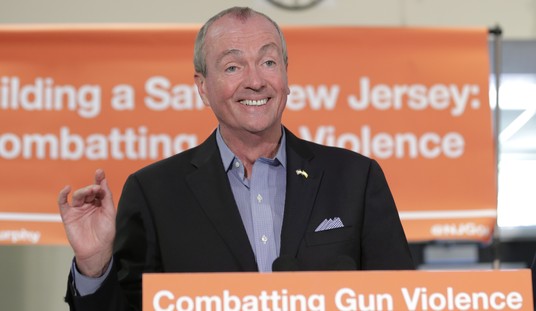Money matters in presidential campaigning — even to a man as far outside the normal political and media paradigm as Donald Trump. The Republican frontrunner upped the ante for his investment in his campaign by nearly $7 million in February, and took in another $2 million from contributors. According to the Washington Post’s analysis of FEC records, Trump has spent $25 million of his own money, and looks to be willing to invest more:
Donald Trump put $6.9 million more of his personal money into his presidential campaign in February, significantly increasing his investment as he began racking up wins in the Republican presidential primary contest, new filings show.
Since he began his White House bid last year, the billionaire real estate developer has lent or given his campaign nearly $25 million, according to Federal Election Commission reports. Although he maintains that he is self-funding the effort, his supporters have contributed $9.5 million, including $2 million in February.
As Trump barreled through Iowa, New Hampshire and South Carolina, he raced through nearly $9.5 million, largely on media buys ($3.46 million), printing and design services ($1.1 million) and event production ($587,000). Trump campaign manager Corey Lewandowski’s New Hampshire-based consulting company was paid $75,000 for the month, including $25,000 the day after the Iowa caucuses.
Trump’s burn rate exceeded 100%, but that matters less for Trump than it does for other candidates. While there may be some ambiguity about Trump’s liquidity, he has made it clear that his candidacy does not require the usual level of spending needed by other candidates to get his message to voters — at least in the Republican primaries. Trump’s celebrity and the media obsession with his campaign has eliminated the need for much of the normal spending, so much so that some have wondered whether Trump would spend any money at all as nominee. This should answer that, at least in part; when the primaries began, Trump opened up his wallet enough to mostly perform at his polling levels, and to dominate the delegate count.
The one concern for Trump’s spending in February could be organization. Over $5 million of the spending in February related to media and events. That doesn’t leave much for the kind of year-long organization that Trump will need in these states if he wins the nomination. That doesn’t mean that Trump won’t put resources into organization down the road, and the RNC has quietly built an impressive voter turnout machine of its own. But the Romney campaign tried to organize late, too (in part because they ran through their cash), and that didn’t work out well in the general election.
Speaking of running out of cash, both of Trump’s rivals have burn rates topping 100% too. The difference is that Trump can afford it:
The GOP front-runner’s overhead was much lower than that of his top remaining rival, Sen. Ted Cruz (Tex.). Cruz sped through $17.5 million in February, his costliest month so far, running down his cash reserves.
The senator raised $11.9 million last month, up from the $7.6 million his campaign collected in January. But Cruz entered March with $8 million in the bank, down from the $13.6 million he had at the beginning of February.
On the other hand, Cruz looks a lot stronger than John Kasich:
Kasich, the Ohio governor, had about $1.3 million in available campaign cash as this month began. That’s far less than the $8 million in cash that Cruz’s campaign had on hand as of the last day of February, although millions of those dollars are under lock until the general election. …
Both candidates also benefit from outside groups known as super PACs. Several of Cruz’s boosters reported beginning March with a collective $10 million left to spend. Add to that another donor-led super PAC funded by a $10 million contribution that remained mostly intact.
Kasich’s super PAC, New Day for America, reported raising $3.2 million in February and ended the month with $2.5 million cash on hand.
At RedState, Streiff argues that Kasich has emptied the tank and is running on fumes:
Keep an eye on the burn rate here. Kasich went into January with $3.3 million. He raised $1 million in January. He raised $3.4 million in February. That is a total of $7.7 million in available cash of which $4.4 was raised in Jan-Feb. He entered March with $1.25. This means in January and February he spent nearly $6 million. By comparison, Ted Cruz raised $12 million in February alone.
To be sure, Kasich probably saw a bump in fundraising after around the Ohio primary but his burn rate for non-intense efforts was such that unless he raised at least $5 million over the past two weeks that he is essentially running on empty.
Cruz will undoubtedly attract support from various Trump opponents, given the delegate math of the current situation, so February’s burn rate matters less to him, especially with his super-PAC remaining vital. Cruz gets the benefit of a consolidated field; Kasich, not so much. Those donors who wanted consolidation as a means to stop Trump are hardly going to cheer Kasich’s continued presence in the field. They want a one-on-one race where Cruz can get some winner-take-all delegate allocations and keep Trump from progressing toward a majority — and at least theoretically, Kasich should want that too. At this point, Kasich should hunker down and save his resources to campaign among unbound delegates, not interfere with Cruz’ efforts to slow Trump’s progress to 1237, and it’s almost certain that donors will see it the same way.








Join the conversation as a VIP Member